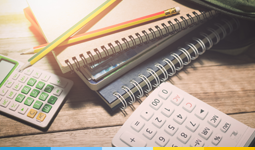Beyond Home Insurance: Creating a Disaster Plan
by Amy Lillard
(1/22/2013) Last year, “Superstorm” Sandy was a harsh reminder to families and businesses across the country of the dangers of natural disasters. Decimating homes and communities, the powerful storm that featured hurricane winds and unprecedented flooding was extreme in its damage and reach. But although Sandy was unique, natural disasters are an increasing fact of life. Hurricanes, tornados, flooding, wildfires, extreme blizzards, and more can pose grave harm to people and property.
That’s why families need a plan. Disasters can hit quickly with little or no warning, and can affect your home as well as public services. Planning ahead, and knowing what each family member should do in case of a disaster, can help people better protect themselves, their loved ones, and their property.
Creating a disaster plan may take a little bit of time and work. But it will pay off in the future. Good disaster plans will include a few elements and steps.
Assess Risk
What natural disasters could affect your family? Generally, you can estimate the kinds of storms and phenomena that could be a danger due to your geographic location. If you live in California, you should probably focus on earthquakes more than hurricanes. If you live in the Midwest, you’re probably more at risk for tornadoes than wildfires.
Of course, natural disasters have the capacity to surprise. Most New Yorkers hardly anticipated a hurricane and major flooding before last fall. It’s a good idea, then, to conduct a bit of research on what risks your region truly faces by contacting your local emergency management office or American Red Cross.
Determine Who’s Involved
Know who to involve in your disaster plan. It’s a deceptively simple idea, and most people will quickly cite the members of their family. But there’s more to consider.
If you live with or care for elderly or disabled persons, you’ll need to consider some special needs in your disaster plan. You may need to ask for assistance from friends or relatives, both in and out of the region. If you can’t access your home in the event of a disaster or evacuation, and a disabled family member can’t leave the home by themselves, you’ll need to have a plan in place to ensure everyone is safe. If you need to access prescription drugs for a disabled or elderly family member but can’t access the pharmacy, you’ll need a backup. These are the kinds of things to think about and plan for.
In addition, don’t forget about including pets in your plan. If you are unable to access your home after a disaster, pets may not be allowed in public shelters, hotels, or other temporary arrangements. As part of your plan, conduct research to see if you can bring pets to local hotels, boarding facilities, or vet offices. Another option is to seek out friends or relatives outside the area that could shelter your animals.
Finally, every member of your family, even children, should be involved in the plan. Explain to children especially the dangers that can come from earthquakes, hurricanes, fire and other potential events, and why creating a plan is important.
Develop a Plan
The central component of your plan should be determining clear steps every family member should take in a disaster. Keeping it simple, and emphasizing why it’s important, can help people reduce confusion in the stress of a disaster.
Your plan should specify two main things. No matter where the family is when a disaster hits, knowing these two items can help ensure everyone remains safe and connected:
• Where to meet. Pick a location outside your home and neighborhood where the entire family should meet in case you can’t return home. Whether it’s a friend or relative’s home, a public landmark, or a shelter site, everyone should know the address and contact information.
• How to communicate. If your family is not together when a disaster hits, know how to get in touch. Texting is often a good way to connect during a disaster — even if a storm disrupts cell or phone service, texting often still works. In addition, identify a family member or relative who lives outside the area for everyone to contact. Ensure every family member has this person’s number programmed in their phones or on hand. Finally, create contact cards for each family member, particularly children, that identify each other and their emergency contacts.
Take Precautions
During a disaster, power and other services may be interrupted, supplies may be unavailable at markets, or evacuation may even be ordered. To support yourself and your family during a disaster, there are other simple precautions you can take ahead of time.
• Create a disaster supply. Relief agencies and government experts suggest that families keep enough supplies (including food, water, healthcare, and other items) in your home to meet your needs for at least 3 days.
• Create a disaster kit. In case your family needs to leave the home in a hurry, creating a backpack or other carrying case with key disaster supplies is extremely handy. Creating a similar kit for your car is also a good idea.
• Keep a radio. In case power goes out or other utilities like cable and internet, keeping a battery-powered radio or TV on hand is an essential way of keeping aware of what’s happening in an emergency situation. Be sure to keep extra batteries as well.
• Learn when to turn off utilities.Storms and other natural disasters can cause damage to water, gas or electricity lines, which can pose a potential danger to your home and family. Teach your family members how and when to turn off these utilities at the main switch or valves.
• Install alarms and extinguishers. Make sure your home has smoke and carbon monoxide alarms, as well as fire extinguishers. And make sure you know how to use all of them.
Help Your Insurance
Your home insurance is a powerful tool protecting you from financial loss after damage from natural disasters and other perils. But it can only be effective and comprehensive if you have the right home insurance coverage. After understanding what natural disasters you’re at risk for, talk to your insurance agent to review your policies and make sure you have the right coverage. Even if you rent, you can obtain protection through renter’s insurance.
There are also things you can do as part of disaster planning that will help you in case you need to file a claim after a disaster. This will make sure you can take full advantage of your coverage, and get you back to normal as much as possible.
• Copy key documents. Certain documents, like birth and marriage certificates, tax records, wills and trusts, can be lost during disasters. Generally essential, they also may be necessary during an insurance claim process. For those reasons, keep originals in a safe deposit box or other secure location, and make copies to keep at home and with a trusted friend or relative. It’s also a good idea to save them electronically online or on a portable flash drive.
• Create an inventory. It’s critical during a claim process to show documentation of exactly what was lost. Making a written or videotaped inventory of your home and all the property within before a disaster hits, including serial numbers, physical descriptions, and cost, will help ensure you don’t lose time or money.
Practice and Update Your Plan
A plan is useless unless your family can do it quickly and instinctively. That can only come with practice. This may mean running drills, or simply quizzing family members every few months about the steps involved if a disaster hits.
Plans also need updating. Your emergency contacts may move or change numbers, affecting where the family will meet. In addition, the precautions you take may need to be updated. Freshen the food and water in your disaster supplies every six months, for example. Test your smoke alarms and their batteries once a month, and check to see your fire extinguisher is properly charged.
Finally, keep your insurance materials current. Update your inventory every 6 months to account for new purchases or changing home value. And keep those personal documents updated and saved in multiple places.
Other related articles:
Natural Disasters: Making Effective Home Insurance Claims for Recovery
Natural Disasters: Does Your Homeowners Insurance Cover You?
Federal agencies, lenders expand mortgage relief to borrowers affected by recent disasters
Home Insurance: How are Insurance Quotes Determined?
Homeowners Insurance: Filing a Claim
Home Insurance Costs on the Rise, Coverage Options Decrease
Home Insurance Quotes: Types of Home Owners Insurance
Fannie Mae & Jumbo Mortgage Rates
Just One Click! = Current Rate Chart

Start by selecting your state

Amy Lillard
The ERATE® Resource Guide to No-Closing-Cost Refinancing
Principal Reduction: New Programs, More Controversy
Understanding Mortgages: Mortgage Paperwork
Understanding Mortgages: Types of Mortgages
Understanding Mortgages: How to Get a Mortgage
Understanding Mortgages: Buy or Rent?
Understanding Mortgages: Working with a Real Estate Agent
Understanding Mortgages: Working with a Real Estate Agent
Refinancing: Selecting a Loan

- Mortgage Program Options
- Interest Only Mortgage
- 100% Mortgage Financing - No Down Payment
- Mortgage Rates Comparison
- Search for Mortgage Rates
- No Costs Mortgage Refinancing
- 2% Rule - Refinancing Mortgage
- Yield Spread Premium
- Prepayment Penalty - Mortgage Refinancing
- What is APR and how is it calculated?
- Private Mortgage Insurance - Refinancing
Moving Ahead With Your Refinance
Get the Updated and Improved Mortgage Rates App from ERATE.com
FREE Mortgage Rate WidgetsYour State's Rates or National Rates
| Program | Rates | APR |
|---|---|---|
| 30 Year Fixed Conforming | 7.009% | 7.031% |
| 15 Year Fixed Conforming | 6.114% | 6.149% |
| 5/1 Year ARM Conforming | 6.426% | 6.439% |
| Last Updated: 10/10/2024 | ||
| Program | Rates | APR |
|---|---|---|
| 30 Year Fixed Conforming | 7.053% | 7.075% |
| 15 Year Fixed Conforming | 6.138% | 6.173% |
| 5/1 Year ARM Conforming | 6.371% | 6.385% |
| Last Updated: 10/10/2024 | ||


